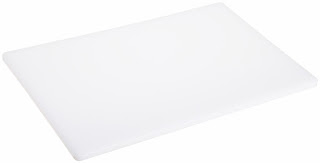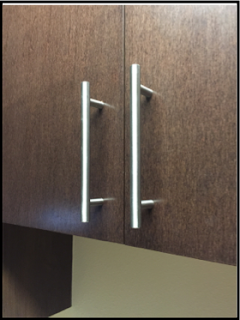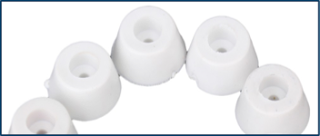 |
| Juan J. Mercado, MD (neuropathology fellow at UAB 2015-17) |
A while ago, as a pathology resident, I was temporarily in charge of organizing the weekly brain cutting activity. During this event I always felt a little bothered by the unpredictability and irregularity that occurred with each cut and the variability of results with each different person trying to pursue the same goal. I decided to do some research trying to find more information about how brain grossing examination was done in different places. To my amazement, I found out about a brain tissue bank in the United Kingdom that performed their coronal sections with the help of a tool. This tool enabled them to create perfect fine cuts every time to perform a complete meticulous evaluation. After knowing about this, I was highly motivated to perform a DIY project. As I optimistically anticipated, the results were excellent. I made the tool usingmaterials that I could easily find in any hardware store. This new and improved tool could now be made by anyone interested in having the same results.
Materials:
· White durable cutting board: the bigger the better (Fig. 1)
 |
| Figure 1 |
· Straight cabinet handles: they come in different diameters, meaning a different brain slice thickness can be created depending on this diameter. Also they come in different lengths. Choose a length proportionate to the size of the cutting board you select. These bars always come with the screws included. (Fig. 2)
 |
| Figure 2 |
· Drill: to make four holes
· Rubber O-ring washers: not necessary, but I use them just for the preservation of the tool, preventing liquids or tissue to enter in the drilled holes (Fig. 3)
 |
| Figure 3 |
· Rubber chair legs (to elevate the board from a surface and to hold its placement) (Fig. 4)
 |
| Figure 4 |
With the above materials you can create the basic version that will permit you to create cuts of only one predetermined thickness based on the diameter of the bar you select. You can also have an add-on to be able to do thinner cuts with the same board, but it is not necessary.
How it works:
After detaching the brainstem via an axial cut through the midbrain and then making the first brain coronal section cut through the middle of the mammillary bodies, proceed as usual making coronal sections but with the help of the tool
The bars aligned in the way pictured (Fig. 5) serve to hold in place any brain size firmly while cutting. Use a rigid knife sliding it above the bars as a guide. In this way the thickness of the brain sections will be the same as the diameter of the bars
 |
| Figure 5 Advantages |
· Always the same results, not relying on the experience of the person cutting the brain -- meaning standardization.
· Homogeneous leveled slices. Option of creating thin slices help in a more meticulous evaluation.
· When a pathologic finding is present, such as a big intraparenchymal hemorrhage that normally disintegrates the brain slice if performed by normal technique; it does not happen with this tool.
· Better pictures.
· It is a lot faster and the cuts are perfect. Less time cutting, more learning and teaching.
See for yourself…




Add-on(s): Optional (need a saw)
A thinner cutting board cut to fit within the two bars. The diameter of the bar minus the thickness of this board will be your new brain slice thickness, making the same board practical for two different thicknesses.


Thanks, Dr. Mercado. I have often thought about how nice it would be to have a tool that could simplify and standardize braincutting. I am hoping he builds a limited-edition series of these devices and sells them at the next AANP meeting. Since I am not particularly mechanically inclined, I would be the first in line to purchase what I am hereby dubbing "The Mercado Brain Cutting Device"!